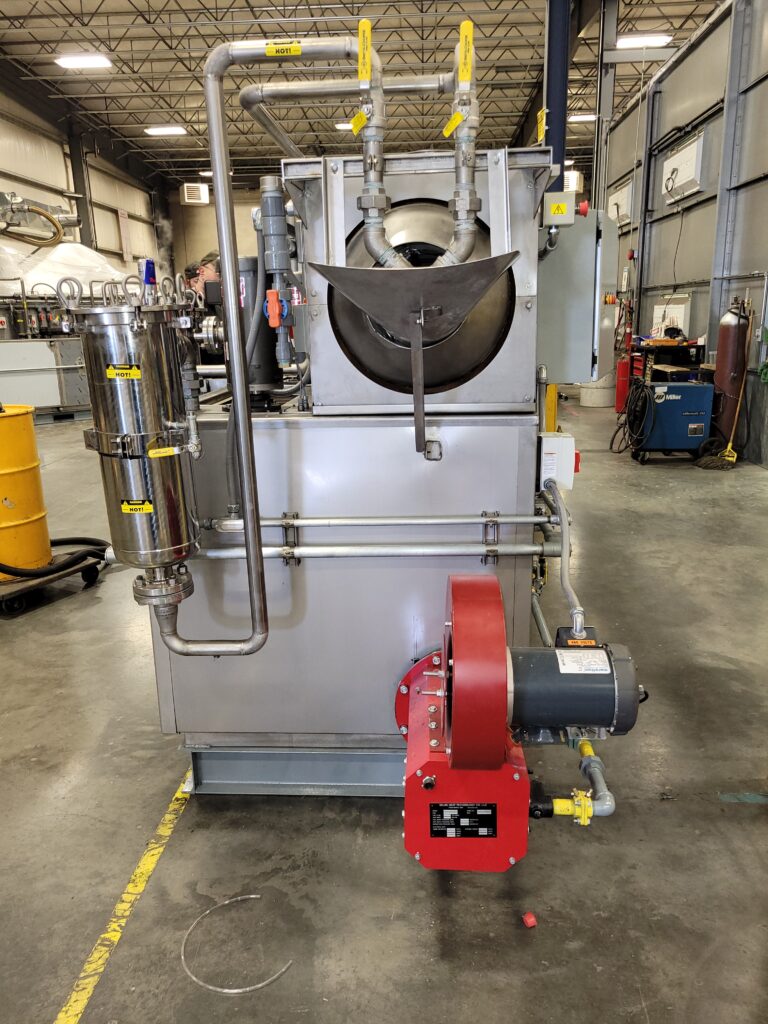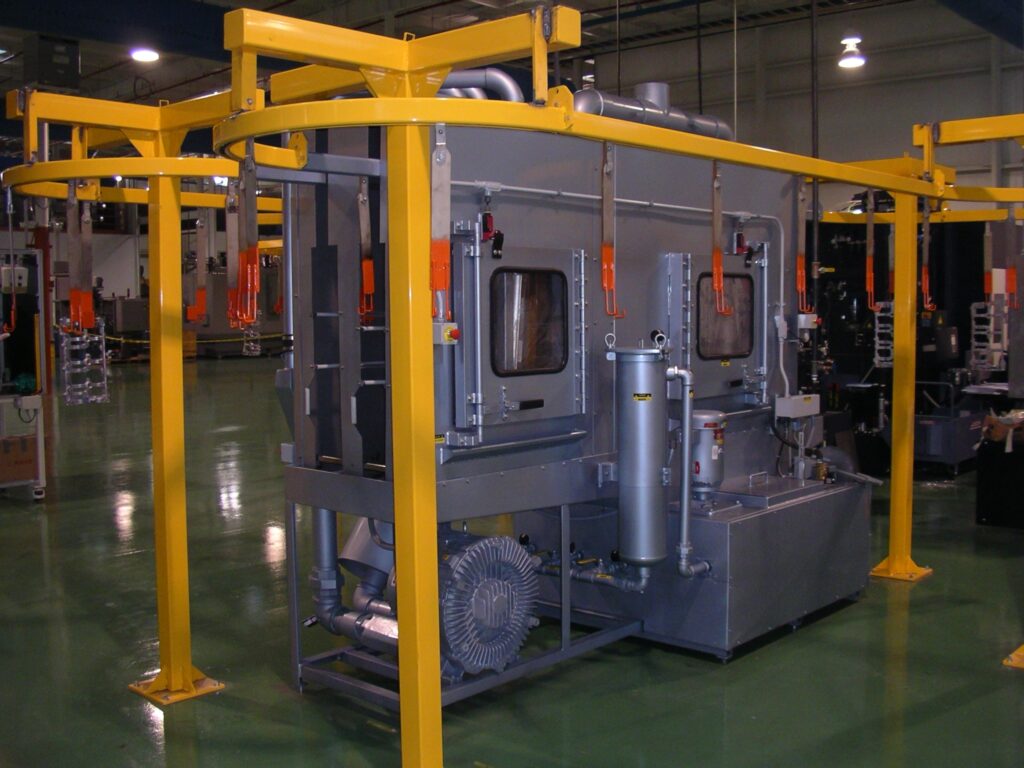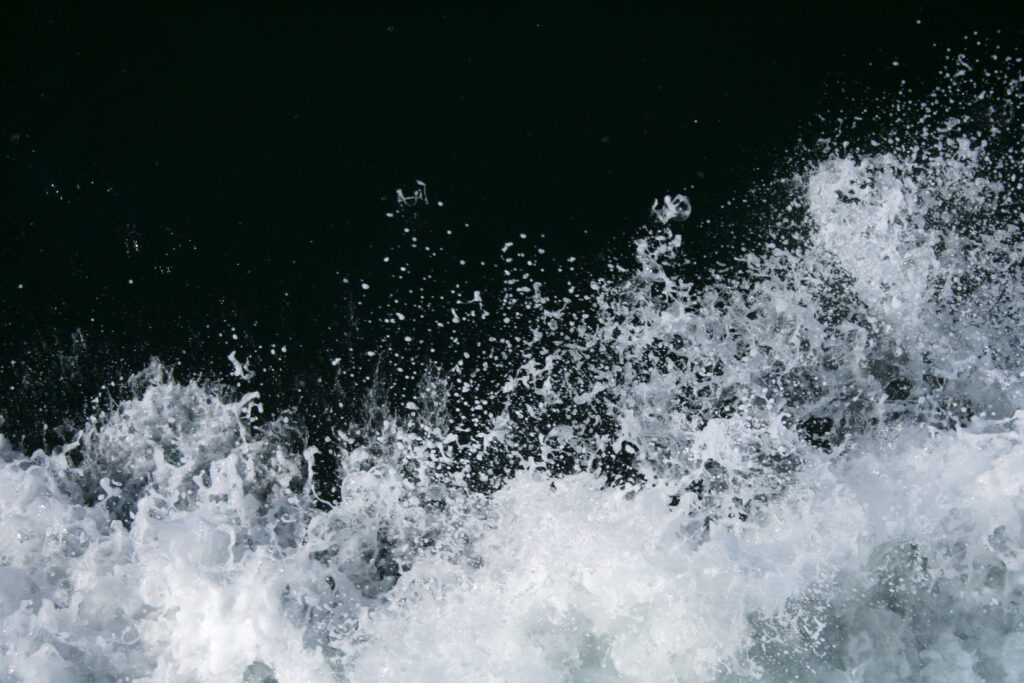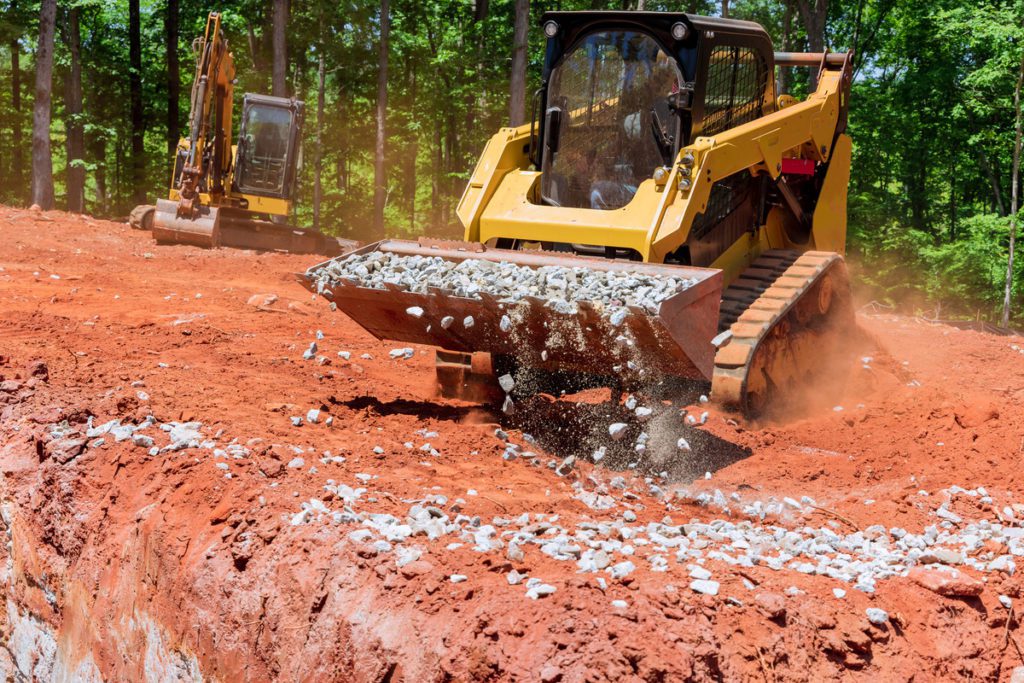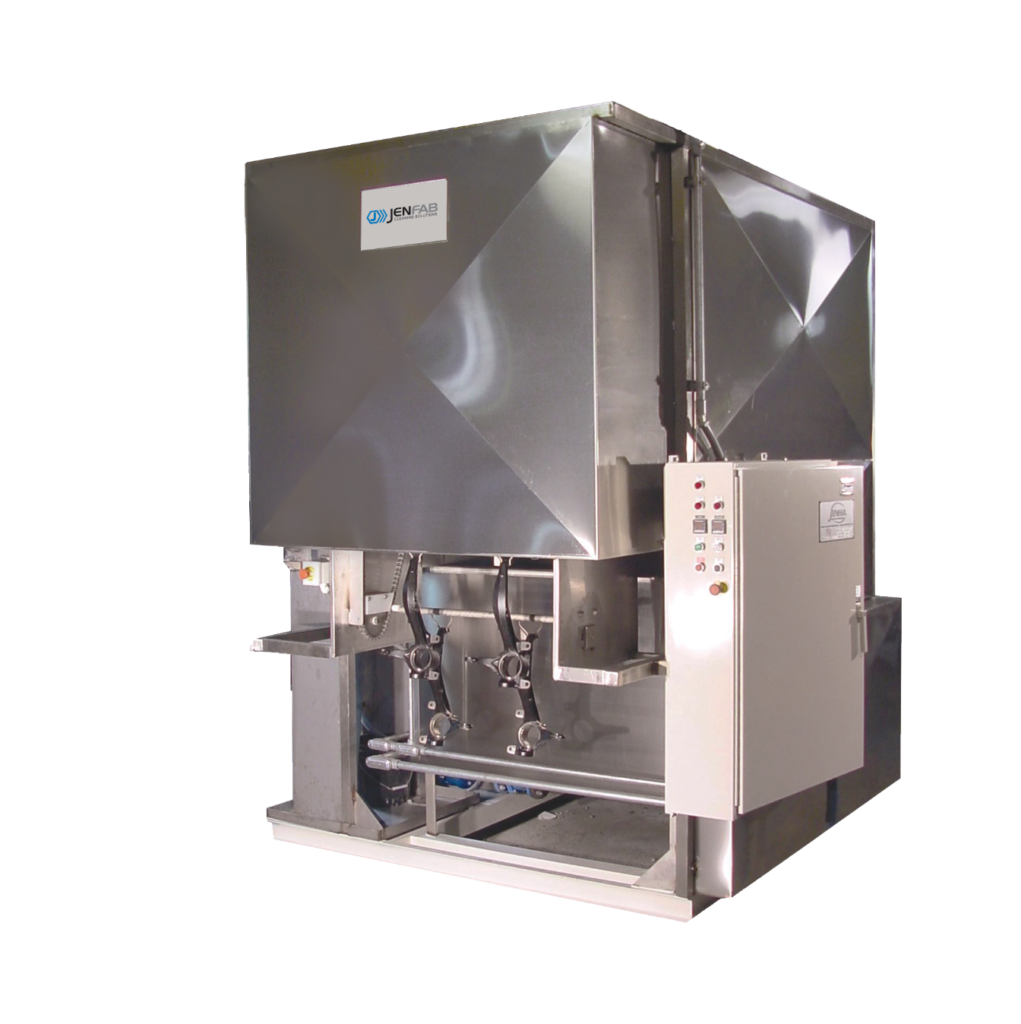Manufacturers and remanufacturers have unique needs. Many of which are influenced by their industry. The aqueous parts washer that best fits an application hinges on several factors, including floor space, part materials, throughput requirements and cleanliness standards.
Is your aqueous parts washer no longer up to par? Do you need a new system for cleaning parts? Start the machine selection or design process with the steps outlined in this article.
7 Considerations for Custom Parts Washers
Before designing a custom machine, you must identify your needs and goals and how you measure them. Sharing these details with the manufacturer of your parts washer is essential!
For your aqueous cleaning system to succeed, it’s essential to interact closely with the machine’s manufacturer. A clear line of communication between your company and the manufacturer produces the best result—a parts washer tailored to your needs.
First, you must define the scope of work through a discovery phase. As the end user, you must outline your expectations for the parts washer manufacturer. Here’s what to consider before ordering a parts cleaning machine.
1. Floor Space Availability
Floor space is a manufacturing plant’s most precious commodity. Space constraints can affect the type of aqueous cleaning system deployed.
At the beginning of a project, the equipment manufacturer must understand the space where the machine is to go and be made aware of obstructions. Any beams or aisleways that may make it challenging to install the machine should be noted.
Take note of the following things:
- Square footage available
- Ceiling height
- Overhead door sizes
- Obstructions
2. Utility Accessibility
What utilities are in place? Can utilities be added for the parts cleaning equipment? Electricity, water and natural gas must be accessible where the parts washer will be installed.
- Water. A must! A water supply line is required to use an aqueous parts washer.
- Electricity. Every machine needs power. Nail down the available electric supply voltage (460-480V/3PH, 230V/3PH, 208V/3PH) and amperage.
- Natural gas. Heated parts washers may employ natural gas. The availability of natural gas can factor into a system’s design but is not always necessary.
- Compressed air. Access or lack of access to compressed air can change your system’s operation, but it may not be required.
3. Part Information
What parts are you processing? Manufacturers need to know what parts will go through the parts cleaning equipment—whether it’s a single part or hundreds of different part numbers.
The parts’ specs affect the system’s design. Materials, sizes, weights and complex geometries could change how the manufacturer recommends designing your aqueous cleaning system.
Common materials include steel, stainless steel, brass, aluminum, plastics, Inconel and titanium. Along with materials, geometries, like blind holes or through holes, impact how parts must be cleaned.
4. Throughput Requirements
Another consideration is your company’s throughput requirements. How many parts need to be processed hourly? How many cubic feet of material must go through the system?
If multiple SKUs will be cleaned by one system, it’s crucial to consider the changeover time required to prevent any lot mixing depending on the type of equipment.
5. Material Handling
How will the parts move to and from the parts washer? How will they be loaded onto the machine and unloaded after processing? Parts cleaning machines can be loaded and unloaded via conveyance, hoppers, vibratory feeders, robotics or by hand.
This step helps the parts washer manufacturer decide if automation integration is required for the system to communicate with other equipment within a manufacturing line or cell.
6. Cleanliness Standards
Not all companies define “clean” the same way. Cleanliness differs from application to application. You can measure part cleanliness in a variety of ways.
You may determine cleanliness based on visual inspection or particulate size. Millipore testing identifies particulate sizes. Your company may judge cleanliness by measuring the surface energy of the parts, either through dyne or water break testing.
Your cleanliness specifications influence the design of the machine greatly! After all, you want an aqueous parts washer that meets your standards. The manufacturer of the cleaning system and the end user must work together to define the cleanliness expectations on the front end of a project.
7. Target Contaminants
We saved the most important for last: The contaminants.
It may seem obvious, but it is necessary to understand what’s being removed from the part. Contaminants may be oils, coolants, particulate matter, grease or burnt carbons. In any cleaning application, knowing what should be removed is critical.
Designing Parts Cleaning Equipment
Parts cleaning machines can be designed once the technical specifics of the parts and manufacturing process are established.
Mechanical interaction, cleaning compounds, temperature, time and adequate rinsing are critical cleaning factors. These factors ultimately determine the success of the cleaning system.
Options for Mechanical Interaction
Mechanical interaction can be accomplished with soaking, spraying, ultrasonic immersion, agitation, rotation or a combination of methods.
Soak
When soaking parts in chemistry, you rely solely on the mechanical interaction of the chemistry to attack, dissolve or emulsify the soils. Chemistries must be aggressive for soaking to work well. The cleaning process must allow adequate time for the chemistry to interact effectively with the contaminants.
Spray
Spray parts washers direct the cleaning solution to impinge the parts from above, the sides and below. Spray headers use stainless steel or brass nozzles to direct the solution and generate overlapping spray patterns.
Parts are typically drawn through spray zones by some form of conveyance, like belts, rotating turntables or rotating baskets.
Spray mechanical interaction impinges part surfaces with pressure and a high volume to remove soils. High volume is as significant as high pressure. The volume of the solution—not the pressure—sweeps the soils loosened by impingement away.
In conjunction with heated chemistry, the combination of pressure and volume removes soils, oils, dirt, chips and other by-products associated with manufacturing.
Agitation
Vertical agitation has the highest degree of mechanical interaction between parts and chemistry. Its movement produces a natural hydraulic cleaning action, generating cavitation in the tank.
Cavitation forces the cleaning solution between parts and inside recesses. With vertical agitation, the aqueous cleaning solution flushes out contaminants and scrubs all parts’ surfaces, crevasses, holes and recesses.
You can combine vertical agitation with rotation to further increase mechanical interaction.
Ultrasonics
Ultrasonics are often used in precision cleaning applications where blind holes are present. Ultrasonics emit sound waves underwater, causing cavitation.
The cavitation process goes like this:
- A generator transfers an electrical current to a transducer.
- The transducer creates sound energy in the water.
- The sound waves cause water molecules to become volatile.
As cavitation bubbles form and travel, they eventually strike the parts’ surfaces and implode. When a cavitation bubble hits a rigid surface, it becomes deformed, losing its spherical shape.
The extreme deformation causes the bubble to implode or burst against the surface. These bursts help shake soils and clean the parts.
Choosing Cleaning Compounds or Chemistries
We can’t talk about aqueous parts washers without discussing chemistry. Every system uses a specific cleaning compound, or chemistry, to achieve the best results. Chemistry affects overall performance.
Without a good compound, your cleaning process won’t be effective. There are thousands of compounds on the market. It’s important to remember that not all compounds are created equal. Not all compounds can be used for all applications.
Your choice of chemical is influenced by the following:
- Part material
- Contaminants
- Method of mechanical interaction
Some compounds foam if sprayed, but they work well in ultrasonic soak processes. Others foam at low temperatures but are very effective at high temperatures. Ultimately, your parts cleaning equipment is as effective as the cleaning compound you pair it with.
Solve Your Parts Cleaning Challenges
Many factors play into selecting an aqueous parts washer. Determining the right system for your application is a joint effort. The equipment manufacturer and you, the end user, must communicate well for the unit to succeed once installed in your facility.
Don’t wait to upgrade your current setup. Start the discovery phase today. Get an aqueous parts washer for your application, floor space and cleanliness standards.
Request a quote online or call our toll-free number at 800-524-9274. Partner with Jenfab Cleaning Solutions to design and manufacture your custom parts washer.
…
This article was written by John Davidson, Chief Commercial Officer of Jenfab Cleaning Solutions. John has been with Jenfab since 2011. He has experience in sales, production and quality capacities. Connect with John on LinkedIn.
Jenfab Cleaning Solutions is one of the largest parts washer manufacturers in the United States. The company has provided innovative custom cleaning solutions since 1960. Jenfab serves automotive, medical, ammunition, heavy equipment and aerospace manufacturers.












